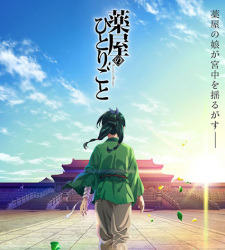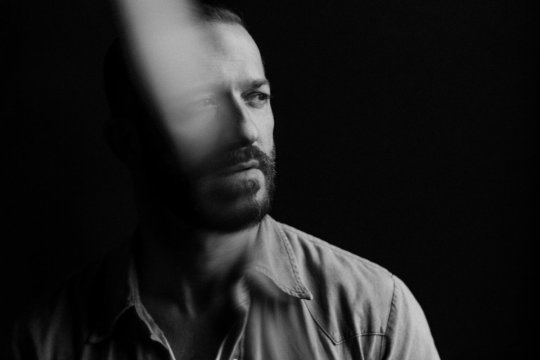#Milan Records
Explore tagged Tumblr posts
Text

Uzumaki's anime series soundtrack is available on vinyl for $31 via Milan Records. Shipping November 15, the score is composed by Colin Stetson (Hereditary, Texas Chainsaw Massacre).
The album is pressed on 180-gram black and white spiral picture disc vinyl. It's housed in a jacket featuring new artwork by Uzumaki creator Junji Ito and a 12x12 insert.

#Uzumaki#junji ito#junji itō#colin stetson#anime#milan records#soundtrack#vinyl#gift#horror#hereditary#manga#hiroshi nagahama#adult swim#toonami
363 notes
·
View notes
Text










Gustavo Santaolalla & David Fleming - The Last Of Us: Soundtrack From The Series Season 1 | Milan Records | 2023 | Black Translucent with Silver Swirl
#gustavo santaolalla#david fleming#the last of us hbo#milan records#vinyl#colored vinyl#lp#music#records#record collection#soundtrack#the last of us#tlou hbo
9 notes
·
View notes
Audio
Ryuichi Sakamoto’s 12
#ryuichi sakamoto#12#milan records#music#ambient#classical#electronic#piano#modern classical#minimal#bandcamp
60 notes
·
View notes
Text
Milan Records Releases the Soundtrack for The Apothecary Diaries Anime
Milan Records has released The Apothecary Diaries (Original Anime Soundtrack) with music by composers Satoru Kosaki, Kevin Ppenkin and Alisa Okehazama. Available everywhere now, the album features original score music written by the trio of composers for the anime series set in a fictional country based on Ming-era China. Based on the light novels by Natsu Hyūga and Touko Shino, the series was…

View On WordPress
6 notes
·
View notes
Text
Beautifully haunting, I gotta rewatch Dexter
#Daniel Licht#Dexter#Dexter Morgan#Milan Records#Milan Entertainment#ambient#soundtrack#television soundtrack#noise#neo classical#classical#violins#haunting#beautiful#music#blood#theme#Spotify
3 notes
·
View notes
Text
Colin Stetson Interview: The Enticing and Inviting Score for The Menu

BY JORDAN MAINZER
John Williams. Hans Zimmer. Howard Shore. These are some of the few heavy-hitters you associate with film scoring, especially around awards season. For horror films, you usually think of folks like John Carpenter or Dario Argento. But over the last half-decade, a rash of electronic or avant-garde classical producers and musicians have made names for themselves as in-demand movie composers. Two of the nominated composers for the Oscar for Best Original Score this year are experimental band Son Lux (Everything Everywhere All At Once) and Hauschka’s Volker Bertelmann (All Quiet on the Western Front). And since 2018, in-demand horror director Ari Aster has employed the unmistakable stylings of instrumentalists and electronica masters for his first three films, Hereditary, Midsommar, and the upcoming Beau Is Afraid. It’s saxophonist Colin Stetson, who we’ve covered many times live, reviewed, and interviewed, who offered his talents to Hereditary, the film that essentially broke him out as an accomplished film composer, and the name you think of when thinking about a new wave of leftfield film scorers.
The latest film to take advantage of Stetson’s compositional prowess is Mark Mylod’s comedy horror satire The Menu, released in theaters late last year and currently streaming on HBO Max. About an inter-connected group of diners traveling to an exclusive restaurant operated by a celebrity chef (Ralph Fiennes), the film’s sort of a cross between Midsommar and Rian Johnson’s Knives Out films. Like Hereditary, the frames and the sounds on The Menu are inseparable once you’ve seen the film; that is, listening to Stetson’s original soundtrack, though it is its own piece of music, you can’t help but see the faces of Fiennes, Anya Taylor-Joy, Nicholas Hoult, and Hong Chau and remember the biting, horrific events that unfold in the film. It’s also another unique entry in Stetson’s ever-growing oeuvre, its palate based in orchestration and string instruments like violin, viola, cello, bass, mandolin, and nyckelharpa, along with the usual saxophone as well as Tibetan bowls, piano, and choral vocals. Sax arpeggios and pizzicato strings, including plucked piano strings, helped Stetson achieve the ultimate contrast of light and dark, beauty and harshness that pervades each frame of the film and its overall arc and mood.
I spoke with Stetson late last fall over Zoom from Montreal about The Menu, his score approach and process, coming up with soundtrack track titles, and how composing for film compares with making solo studio albums. Read our conversation below, edited for length and clarity.

Image courtesy of Milan Records
Since I Left You: Was there anything unique about your approach to your score for The Menu in comparison to your approach to other scores you’ve done?
Colin Stetson: This one was certainly the most decidedly rhythmic at its core. So much of the bones of it is bounded in a very crisscrossing, rhythmic scaffolding, this thing that can be fun, light, and prancing at times, and also incredibly tense and driving and static.
SILY: I noticed the rhythms when listening to the first track and first single, “All Aboard”. Why did you choose “All Aboard” as the first taste of this soundtrack, in terms of it being track 1 and the first piece of music revealed?
CS: It’s a good one in terms of the first taste of something in this story. It’s the first music that happens in the film, within a minute or so of the beginning of the film, and it sets the stage so much for what happens later. A lot of the themes that are more or less weaving through all of the rest of the film start out here, in more or less innoucuous ways. They’re cloaked in a delightful sheen to entice and invite rather than forebode. I liked the idea that it would be the same opening invitation to the music as well.
SILY: When you score films, do you think about the scores as eventual standalone pieces of music, the soundtrack?
CS: Not first and foremost. I am very aware that--and this is a little more process and functional--for my initial reactions, I'm usually crafting music to picture. There’s always things from the first cut that are going to change. In many instances, on the soundtrack album, I will use my initial cue [of music] rather than what it may get edited into down the line. What ends up being manipulated on picture, in my opinion, is now standing up and propping a picture, but it might not stand on its own in a musical context. I’m aware that sometimes there are changes made to music outside of my control, outside of anything that will end up on a record. [What’s on the record are] my cuts, for lack of a better term.
SILY: Even when you’re not making music for a film, do you find yourself, in the process of musicmaking, being inspired by imagery or having images showing in the background when recording?
CS: Absolutely. It’s one of the things that’s been ever-present in my solo music, namely, and across the board for me. It’s all world-building and storytelling, very truthfully. Virtually all of the music I’ve made, the way I make it, there’s a corollary narrative structure. Imagery is something that for me informs the arc of an overall album. I’m not just making collections of songs, and those songs aren’t just collections of parts and sounds. There’s more of a thoughtful intent baked into every bit of it.
SILY: With regard to your use of vocals on the score for The Menu, did you have any newfound inspirations or intentions?
CS: There was always going to be this element of the sacred, the revelatory, the worshipful aspect to all of it. Wrapped up in the main character of the chef is a very profound love for the subject matter and craft. It felt apt for that to be represented by vocals, especially as the film neared its climax.
SILY: Is coming up with track titles for the soundtrack as simple as taking a cue from what’s happening in the movie? Are they difficult to mull over?
CS: Not really. Some of them are quite obviously what they were on a cue sheet. “Taco Tuesday” was the cue all along. Did I think of possibly changing that? Yeah, but when was the next time I was going to have the option of naming a song “Taco Tuesday”? It ties intrinsically to the film and doesn’t give anything inherent away, and it’s certainly not lofty. The track sheet, when you see it on the back of the album, there are aspects that ultimately tie in with the arc of the film’s story. I like to have some of the titles be rooted and reflected in that. Sometimes, I take it from dialogue and try to boil it down to an essence of what it is that scene is doing. Others are a little bit more esoteric. It’s not like album titles on a record of mine. Those are usually a lot more exhaustive, because ultimately, the score has its story. It has its narrative. All these cues were written for picture, for themes happening in the film. When I’m making my own solo record, the narrative and the language used is coming from a world nobody gets to see except for me. I do tend to take a different tact with that titling in comparison to soundtrack titling.
SILY: “The First Cheeseburger You Ever Ate” will also never be a Colin Stetson title.
CS: Absolutely not, but at the same time, it ties it to the film and is representative of a bigger idea in peoples’ personal experiences. That piece of music is the most loving, beautiful, angelic, childlike. It’s embracing and getting back to basics and everything made anew. That title gets to be tied very concretely and nods to experiences we had.
SILY: How, over the years, have you grown as a composer?
CS: I’d like to think in most ways. [laughs] Certainly in terms of the process. I’ve learned how it is I like to work and have streamlined that process. With every job, [there’s] something new I haven’t opened up with before. By the end, I feel as though that toolbox and comfort zone has expanded. Compositionally, I’m more able to react to picture in ways that really serve it. I’m able to do more with less. I can always sit back, watch the finished product, and understand where things really work, work, and are fine. For those that are fine, you understand how to make it, on another offering, work. In this, as in everything, it’s all a path. I can adore the object after it’s made and still understand the things about it that I can learn from and improve in subsequent offerings. I am lucky in that I have a strong sense of love and admiration for the objects I make and an equally strong instinct for the self-critical. I can identify things I deem learning instances for improvement. It’s just a constant state of that with no real destination.
SILY: Have you ever done a live score to a film you’ve composed for? If not, would you consider it?
CS: There’s talk of that to come, so we’ll see. There’s certainly talk of presenting music from scores live. With luck, time, and effort, it will start to happen in the coming years.
SILY: What’s next for you in the short and long term?
CS: I’m working on another feature I can’t talk about yet. I’m in the midst of two solo records that will see the light of day in the next year. Uzumaki is finally coming out. There are numerous other things in the works, but those are the ones right on the precipice.
SILY: Are you making more Void Patrol music?
CS: There are certainly gonna be some shows. Who knows? I’m sure we’ll get up to something.
SILY: Do you tend to consume unrelated media when you’re writing or recording music?
CS: I expose myself to certain things when I’m working on certain things: You can’t help but be influenced by what it is you’re filling your head with. I try to shepherd my overall existence in particular ways when working, depending on the space I want to be in. I don’t know I’ve ever practiced in total abstinence. The years I did Hereditary, I didn’t watch horror or listen to anything in that genre. Certain things can be mired in trope that I like to stay away from. I have a permanent abstinence on the types of things that might lead one in a direction that’s a bit more heavily trod.
SILY: That said, is there anything you’ve been listening to, watching, or reading lately that’s caught your attention?
CS: I’ve read a book recently I did not enjoy, so I won’t talk about that one. [laughs] In the fall, I tend to get into a very re-ready space. I read two Jim Harrison books recently that I always enjoy, The River Swimmer and Returning to Earth. Hard-Boiled Wonderland and the End of the World by [Haruki] Murakami, which is my all-time favorite. Christopher Paolini’s To Sleep in a Sea of Stars was fun, beautifully imagined sci-fi and reads like watching a movie. It’s visually very striking and almost popcorn in terms of how accessible and fun and encompassing it is. Similarly, Andy Weir’s Project Hail Mary was a cover-to-cover, fast, fun, effortless read.
Music-wise, I’m not coming up with anything new, so I’ll leave it at the books.
#interviews#colin stetson#milan records#the menu#john williams#hans zimmer#howard shore#john carpenter#dario argento#academy awards#best original score#son lux#everything everywhere all at once#hauschka#volker bertelmann#all quiet on the western front#ari aster#hereditary#midsommar#beau is afraid#mark mylod#ralph fiennes#anya taylor-joy#nicholas hoult#hong chau#zoom#void patrol#jim harrison#the river swimmer#returning to earth
2 notes
·
View notes
Text

Arcade Fire with Owen Pallett / her: Original Score
0 notes
Text



fed.cirillo: The Eras Tour, il sesto tour di concerti di Taylor Swift, è iniziato a Marzo dell'anno scorso e si concluderà in Canada a Dicembre di questo anno, con un totale di 152 show da 3 ore ciascuno.
Lo show di ieri sera ha fatto tremare San Siro, non avevo mai visto una cosa del genere.
La forza, l'empatia, l'umiltà e la dedizione al lavoro di Taylor Swift non hanno eguali.
Non a caso è la n1 al Mondo.
Allego foto di rito, video e team Island (Taylor's version)
translation: The Eras Tour, Taylor Swift's sixth concert tour, began in March last year and will concludes in Canada in December this year, with a total of 152 shows spanning 3 hours each.
Last night's show rocked San Siro, never seen anything like it.
Taylor Swift's strength, empathy, humility, and dedication to her work are unmatched.
It is no coincidence that it she is #1 in the world.
Attached rite photos, video and team Island (Taylor's version)
#thank you anon!#i didn’t check of anyone else has posted but nbd#federico cirillo#island records#director#eras tour milan 1#eras tour#taylor swift
67 notes
·
View notes
Text










Best of Milan Fashion Week Spring 2023 (Part 1)
Act No.1
Ambush
Aniye Records
Antonio Marras
Bally
Blumarine
Del Core
Diesel
Dsquared2
Emilio Pucci
#favorites#Spring 2023#Milan Fashion Week Spring 2023#Act No.1#Ambush#Aniye Records#Dahan Phuong Oanh#Antonio Marras#Yuna Heo#Bally#Nyagua Ruea#Blumarine#Sofia Steinberg#Del Core#Jimai Hoth Gor#Diesel#Nina Pronk#Dsquared2#Louise Robert#Emilio Pucci#Malika Louback#models#fashion#runway
16 notes
·
View notes
Text

aniye records fw23 ☆
509 notes
·
View notes
Text

Martyna Wilkiel - Aniye Records, Fall 2023 Ready-to-Wear, Milan Fashion Week
source: aniyerecords.com
45 notes
·
View notes
Photo




Infinity Pool’s original motion picture soundtrack is available on vinyl via Death Waltz in association with Milan Records. Shipping in July, the score is composed by Tim Hecker (The North Water).
The 2xLP album is pressed on 140-gram vinyl with two editions: Mondo exclusive picture discs with artwork by Greg Ruth ($45; limited to 500) and clear red color vinyl ($40; limited to 2,500). They're housed in a red plastic gatefold sleeve within a spot varnish jacket.

#infinity pool#brandon cronenberg#alexander skarsgard#alexander skarsgård#mia goth#cleopatra coleman#jalil lespert#amanda brugel#death waltz#milan records#vinyl#gift#soundtrack#greg ruth#tim hecker
25 notes
·
View notes
Text








aniye records ss24 rtw ☆
38 notes
·
View notes
Text
1/18/25.
Happy 3,000th blog post.
Al Doum and the Faryds (Milan, Italy) are an Italian group who have been making music for over 10 years. "Freaky People" is their 5th full length album. I learned about the band for the first time when I saw that Gerard Cosloy bought it. It didn't surprise me to learn that Raffaele Melina had also bought it a while ago. I don't know Raffaele, nor do I communicate with him, but he and I have 135 items in common in our Bandcamp collection. A little online searching turned up this article about him. If you don't follow Raffaele on Bandcamp, you might want to. He's made my snooping life a lot easier and I can't tell you how many bands I've learned through his Bandcamp activity.
Al Doum and the Faryds get an "experimental" label on both Bandcamp and Discogs, but this doesn't feel like normal experimental fare. "Freaky People" is melodic and groovy. It's like a cool combination of Talking Heads, black midi and either Dungen or Goat. The Bandcamp description states:
"Their typical blend of Spiritual-Jazz, Psychedelia and Afro-Latin Rock remains on the same wave, accentuating the collective rite of liberation and expansion of the spirit. There's certainly a greater lightness and airiness, expecially in the most immediate and direct arrangements to convey the message of brotherhood; because the absolute weapon lies in female voices and choirs."
"Freaky People" was released in 2021 on Black Sweat Records.
#Al Doum and the Faryds#Milan#Italy#Black Sweat Records#Gerard Cosloy#Raffaele Melina#Talking Heads#black midi#Goat#Dungen#Bandcamp
4 notes
·
View notes
Audio
Iron Maiden - The Number Of The Beast
#Iron Maiden#Tears Of Eternity#the number of the beast#Format: CD Limited Edition Numbered#Heavy Metal#Genre: Heavy Metal NWOBHM#Tracks 1 to 13 recorded live at Forum Assago Milan May 9 1993;#90's#90s#1993#Limited edition of 1000 numbered copies in digipak.#UK
24 notes
·
View notes